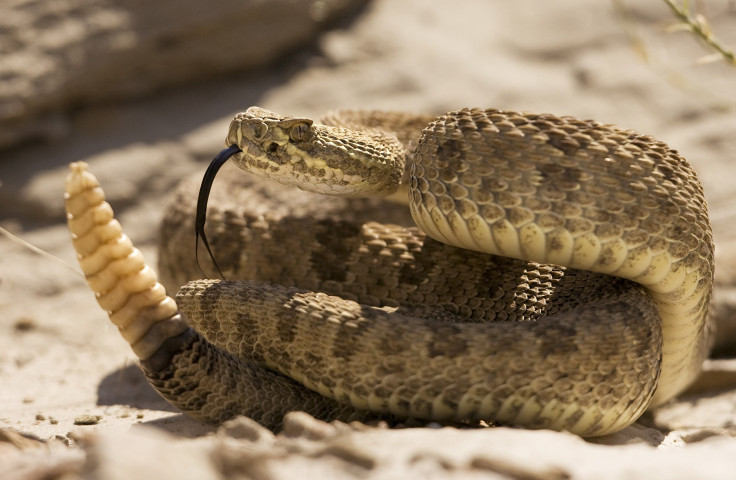Rattlesnake Head Bites Man After Decapitation, Nearly Killing Him

A Texas man was badly bitten by a decapitated rattlesnake when he tried to pick up the slain serpent’s head. The severed head released a potentially fatal dose of venom into his body.
The man had found the rattlesnake while doing yard work outside their Lake Corpus Christi home. The man, identified as Milo Sutcliffe, used a shovel to behead the four-foot-long snake. When he tried to throw the snake's head in the garbage, it bit him, according to his wife Jennifer Sutcliffe.
“Which in that case since there is no body, it released all its venom into him at that point, so he had a lot of venom,” the wife told local news station KIIITV.
His wife told the news station that doctors said he might not survive.
However, after receiving 26 vials of antivenom, her husband showed signs of recovery. Trauma surgeon Michael Halpert told the news outlet the man’s kidney function is weak, but he is stable.
“That’s kind of a classic mistake. People don’t realize that reptiles and mammals are wired differently,” Leslie Boyer, antivenom doctor and founding Director of the University of Arizona VIPER Institute, told Gizmodo. “The head end of a cut-up rattlesnake can continue to function, including the venom glands, for a long time afterward and, in fact, the other half continues to work. It’ll rise and rattle.”
According to Boyer, there have been cases in which snakes have moved for 12 hours after being cut in two. In one of the cases, someone was envenomated by a mummified snake head years after the reptile died.
Boyer says that cutting up a snake is not at all the right way to handle the situation.
“It’s cruel to the animal and it leaves you with a smaller piece that’s venomous to pick up,” she said. "It’s better to just back away at least two steps, and call an expert to remove it. Or move it yourself. She would only advise killing it if it’s in a confined space and is an immediate threat."
© Copyright IBTimes 2024. All rights reserved.




















